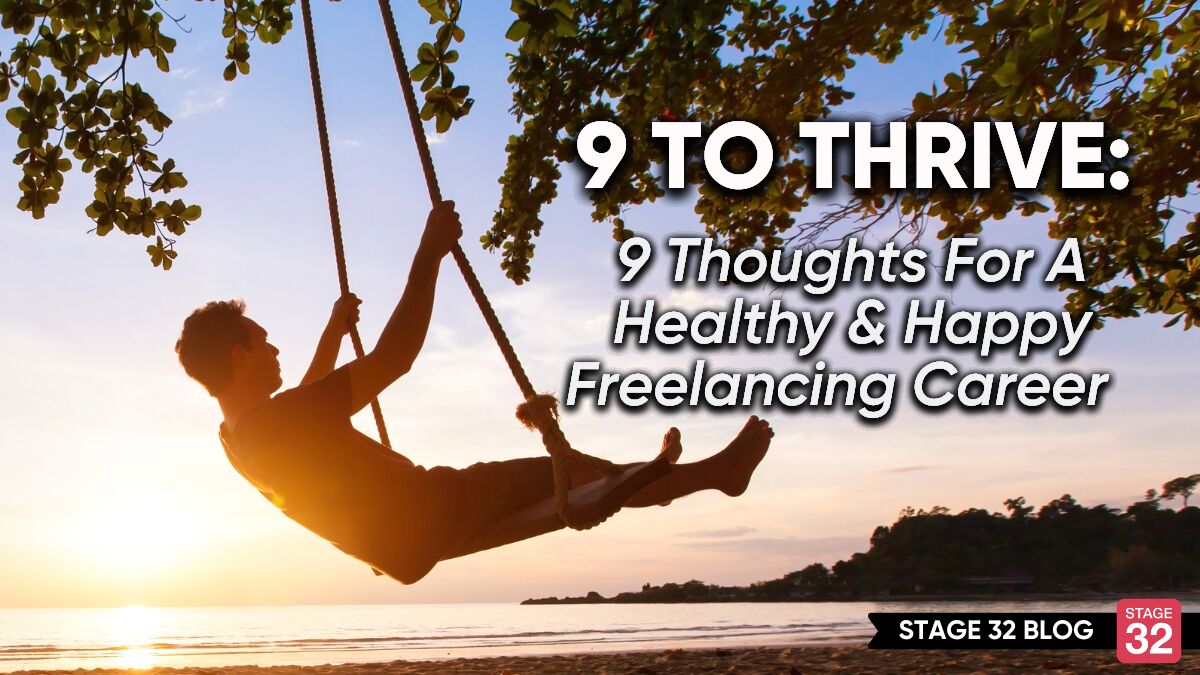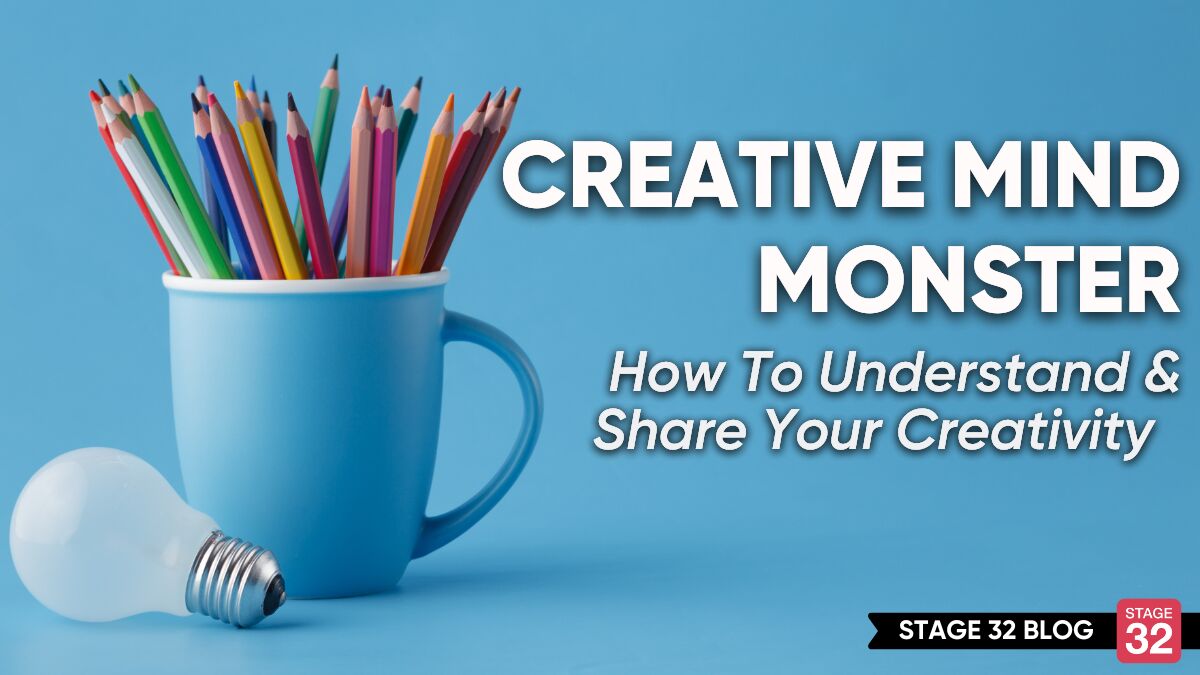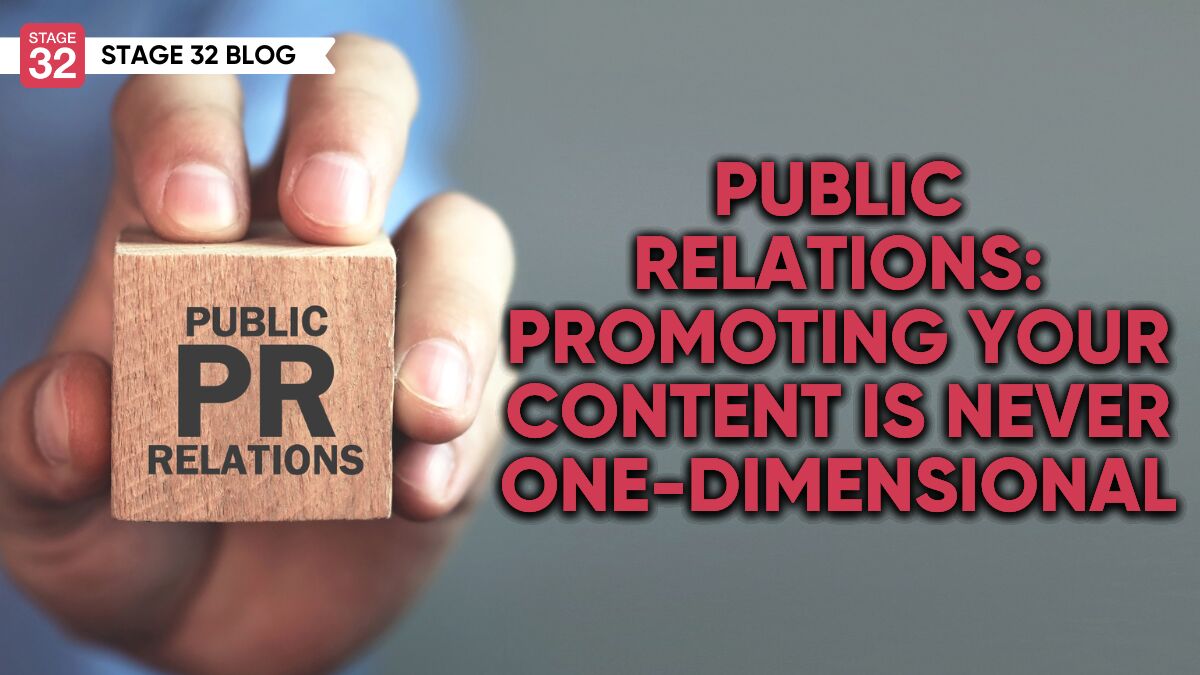Public Relations: Promoting Your Content Is Never One-Dimensional
Public relations is a mystical profession. It’s difficult to describe. It is impossible to guarantee and there is no one-size-fits-all when it comes to strategy.
It’s a profession that is not for the faint of heart. You need a strong resolve and a titanium shield to shed the slings and arrows that may come your way – from both the public and your clients.
Who is it for? Public relations is for any individual, organization, or brand.

What Is Public Relations?
The task of public relations is to create positive media – traditional or digital. It amplifies a positive brand message that is crafted to create, enhance, maintain, protect, and manage a favorable image to the public. In other words, it gets eyeballs on your project.
But public relations is more than just media coverage. It’s the grunt work behind the end result. It’s the setting up of the narrative, the story, and finding what media appeals to which audience that may be interested in that story.
Public relations is NOT GUARANTEED. It’s unpaid earned media and creates organic results. If you want guaranteed media, you must pay for placement advertising. Even that isn’t a sure thing.

How Does Public Relations Work?
Create a narrative that tells a story. It has to set the brand/project/person apart from the competition or say where it fits in. The audience has to care.
Nobody cares that you made a film, wrote a book, or acted in a play. They want to know WHY they should care. It’s up to the PR professional to work with the client to figure out that narrative.
From there, depending on the client’s budget, the delivery of the message needs to match the audience.
You start with platforms. Is there a website? Are there social media sites that are directly set up for this project or is it a general site for the brand or person?
The press release needs to be written in a way that the media can just use it verbatim if they don’t have the room or the time to gather an interview. A PR professional knows which media to solicit directly and how that media prefer to receive their pitches. They also use a PR distribution service, which depending on the price, will maximize the reach of the press release.

Promoting Your Story
Public relations is like shapeshifting, but you don’t have to kill superhumans to acquire these abilities, like Sylar on the TV series Heroes. You just have to think creatively.
Digital storytelling goes where your audience lives. It includes transmedia – sharing different versions of the story on multiple platforms. One of my favorite examples was from the TV series Dallas on TNT. The characters, such as John Ross (Josh Henderson) had their own Facebook and Twitter pages IN character. The engagement was between John Ross Ewing and the fans, not Josh Henderson.
Whether it’s a film, television show, video game, book, or hair product, treat each platform with its own script and its own unique part of the story. The story is both software and hardware. Your website – the main story – is at the core. Everything points back to it.
There is no greater budget for a transmedia movie launch than The Dark Knight. This video shows how comprehensive this launch was and how epic the engagement was. Of course, few creators have this budget. But what the Batman launch does is give you ideas of what you can use for your own.
Create platforms, such as Instagram and TikTok, where you can share behind-the-scenes stories about your project and your brand. People do not feel connected to a brand. They connect to humans. Even if your movie is Oppenheimer, the story is about humans.
If you can, get out in front of people or have someone representing you do it – via podcasts, special events, networking, book signings, speaking, and other events. This reminds people that you are there. The event can be in person or virtual.
Create your own media. However, there is a methodology to it. If you know how to optimize each post, such as knowing what works best for what audience, using the proper hashtags (how people find topics they want to see), and making the content interesting and engaging – who knows who might find it?
![]()
Hits (Results)
There are two types of media: created/paid and earned. Anything you add to the digital space can lead to earned PR. The purpose of digital content is to attract awareness, get others to consider your content by sharing and engaging with their personal audience, and potentially convert those eyeballs into customers and buyers.
All your digital profile is meant to seek out organic viewers and existing customers to build trust. The beauty of digital is that it creates real-time content and real-time responses.
When someone does share your content, such as a trailer, music video, scene, or blog post, that is an act of earned PR. If someone randomly sees it and likes it enough to share it with their online circle, embrace it.
Your storyline needs to be newsworthy for the media to consider it.
Every week, the headlines alert you to a shrinking newsroom. The remaining reporters are expected to carry the load of all their laid-off colleagues. While a reporter may be assigned to your story, it doesn’t mean they have unlimited time. The reporter also doesn’t control what ends up in the publication.
When I was the PR director of a professional baseball team, I remember watching a reporter adapt his story size three times during a game. It went from 800 words to 600 words to 500 before the ballgame ended. It’s also not unusual for a story to be killed, meaning there is no room for it and regardless of the effort put into writing it, it will never see the light of day. This especially happens when something major breaks.
It doesn’t matter how much effort you or your PR person puts into soliciting the media. You are not the president of the United States or Taylor Swift. It either gets an interview, a hit, or it doesn’t. The reporter and their editor decide what stories to use. You have no say.
The silver lining is that because most newsrooms have limited journalist resources, they publish a lot of press releases verbatim on the web. Consider this a hit. Even better, it shows up when you Google your project.
Don’t forget other digital media sources. Take a trip through YouTube and TikTok. You may not think much about influencers, but I can assure you they have a bigger audience than sometimes even CNN.

The Universe Is Endlessly Full Of Ideas
Media events may include all or any one of the following:
- Breakfasts and luncheons – can be formal or informal. For some of the seasons covering the National Hockey League Calgary Flames, the media were invited for a breakfast kickoff to training camp each year. Besides the PR people, the general manager and president would attend and ask us what they could do to make our jobs easier. It doesn’t happen now, but it was nice when it did.
- Briefings and press conferences – are generally used for something topical – a crisis, a film launch, or a significant personnel change. The media are invited via an advisory. The setup includes a podium, maybe a platform for cameras, plugins for an audio feed, refreshments, etc.
- Conference calls are also used for breaking news or crisis management and include reporters who are not local.
- Editorial board meetings – are one-on-one with editorial boards, such as a publication, specific editors, and writers, and are scheduled at the beginning of a campaign. The goal is a fact-finding discussion, much like the breakfast, where it’s informal and non-confrontational. It’s where the organization can share information, offer a viewpoint, and build a relationship with the media.
- Gimmicks and non-news items – offer some sort of swag to the media to get their attention. It’s usually for a soft news section (fashion, food, homes). The swag could be donuts for a morning radio crew, keychains, and pens at a presser, or a jersey for rightsholder media.
When you need to bring in the public to an event, there are numerous online event directories where anyone can post their information for free. LinkedIn and Facebook are two platforms, but also local media lists events online, and they sometimes choose a couple to promote on air.
A meme is a viral gift if it resonates right. The audience is what gives it the magic. Common memes are humorous, unconventional, inspirational, socially conscious, and political. Encourage followers and viewers to create their own memes. Perhaps offer them a couple of behind-the-scenes photos or screenshots from a film. Run a contest for the best meme.

Going Viral
You can’t force viral. You, your PR person, your music video, your A-list member, nobody can make something go viral.
It’s organic. The audience decides what resonates. Your words, video, picture, real-life moment, or content must be in the right place at the right time.
There are numerous examples, both positive and negative. If an item trends high on a particular platform, it may spill into others and even make the news.
My Maritime Canadian singer/songwriter friend Dave Carroll (Sons of Maxwell) released a song that went viral and is still popular today. The lyrics are based on his true story where he was sitting on an airplane, watching the baggage handlers winging his guitar case back and forth like a basketball. It dropped and they ultimately broke his very expensive Taylor guitar. The airline company refused to compensate him.
Dave ended up writing a three-song series about that painful process of trying to get restitution. A short time after the first song’s release, I saw him on CNN. By that time, United Breaks Guitars had over one million plays on YouTube. This was before Instagram and the iPad were launched. Today, it has over 22 million.
In conclusion, your narrative (story/project/brand) is your media. How it gets distributed will depend on your budget and creativity. How it gets received depends on your audience.
Surrender control and detach yourself from how many hits you think you should get. Embrace the ones you do, however significant or small they might be.
Let's hear your thoughts in the comments below!
Got an idea for a post? Or have you collaborated with Stage 32 members to create a project? We'd love to hear about it. Email Emily at blog@stage32.com and let's get your post published!
Please help support your fellow Stage 32ers by sharing this on social. Check out the social media buttons at the top to share on Instagram @stage32 Twitter @stage32 Facebook @stage32 and LinkedIn @stage-32
| 9 To Thrive: 9 Thoughts For A Healthy & Happy Freelancing Career |
| Creative Mind Monster: How To Understand & Share Your Creativity |
Search Stage 32 Blog
There are now 4035 blog posts for you to enjoy. Search them all by tags below.
Acting, Advice, Cinematography, Coffee & Content, Composing, Contests, Distribution, Featured, Filmmaking, Financing, Inspirational, Networking, Producing, Screenwriting, Success Stories, Tips, Trending,Relevant Tags
Recommended Articles

How Modern Franchises Became Our New Religion
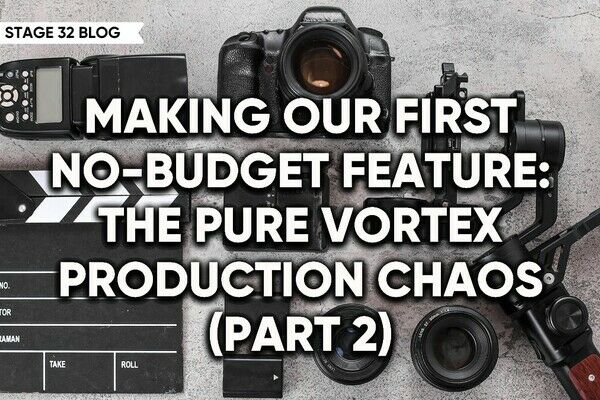
Making Our First No-Budget Feature: The Pure Vortex Production Chaos (Part 2)

Coffee & Content: The Genius of Weapons and How to Know When Your Script Is Ready
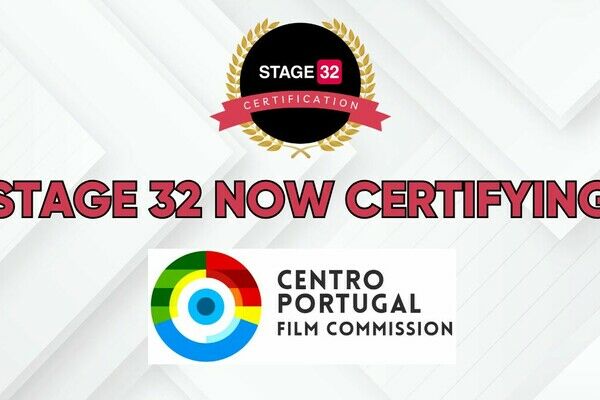
Stage 32 Now Certifying Centro de Portugal Film Commission!

November Write Club Week #3: How To Make A Strong First Impression When Meeting Execs, Producers, & Reps
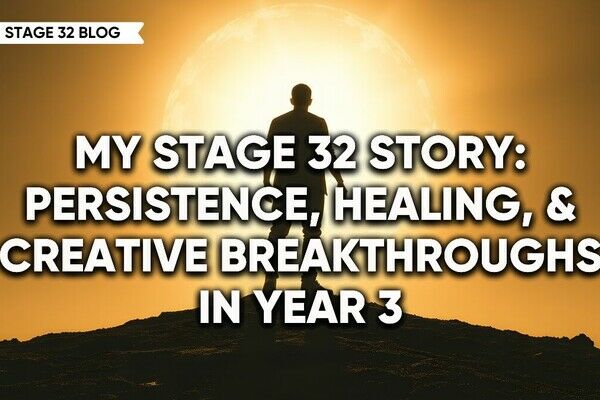
My Stage 32 Story: Persistence, Healing, & Creative Breakthroughs in Year 3
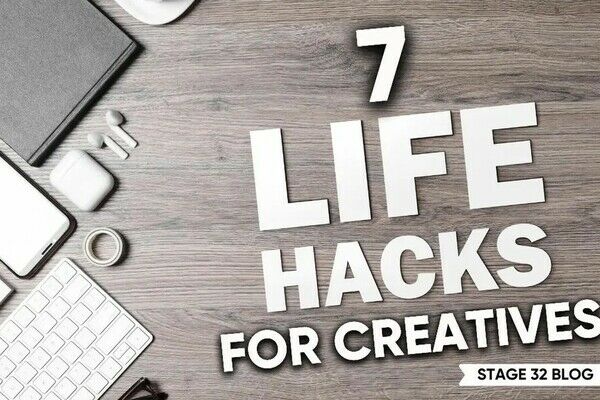
7 Life Hacks For Creatives
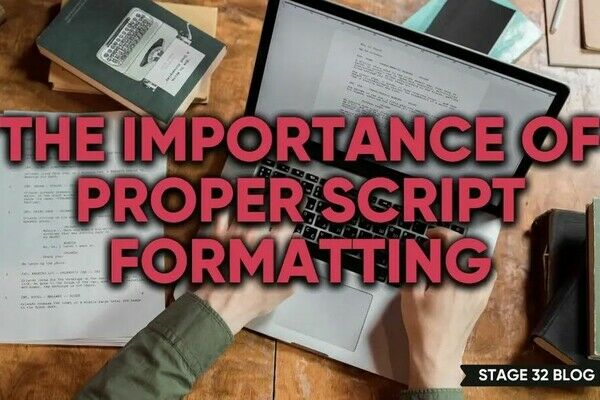
The Importance of Proper Script Formatting
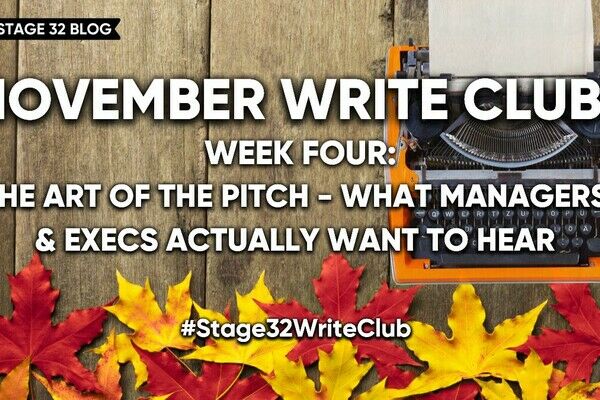
November Write Club Week 4: The Art of the Pitch- What Managers & Execs Actually Want to Hear



